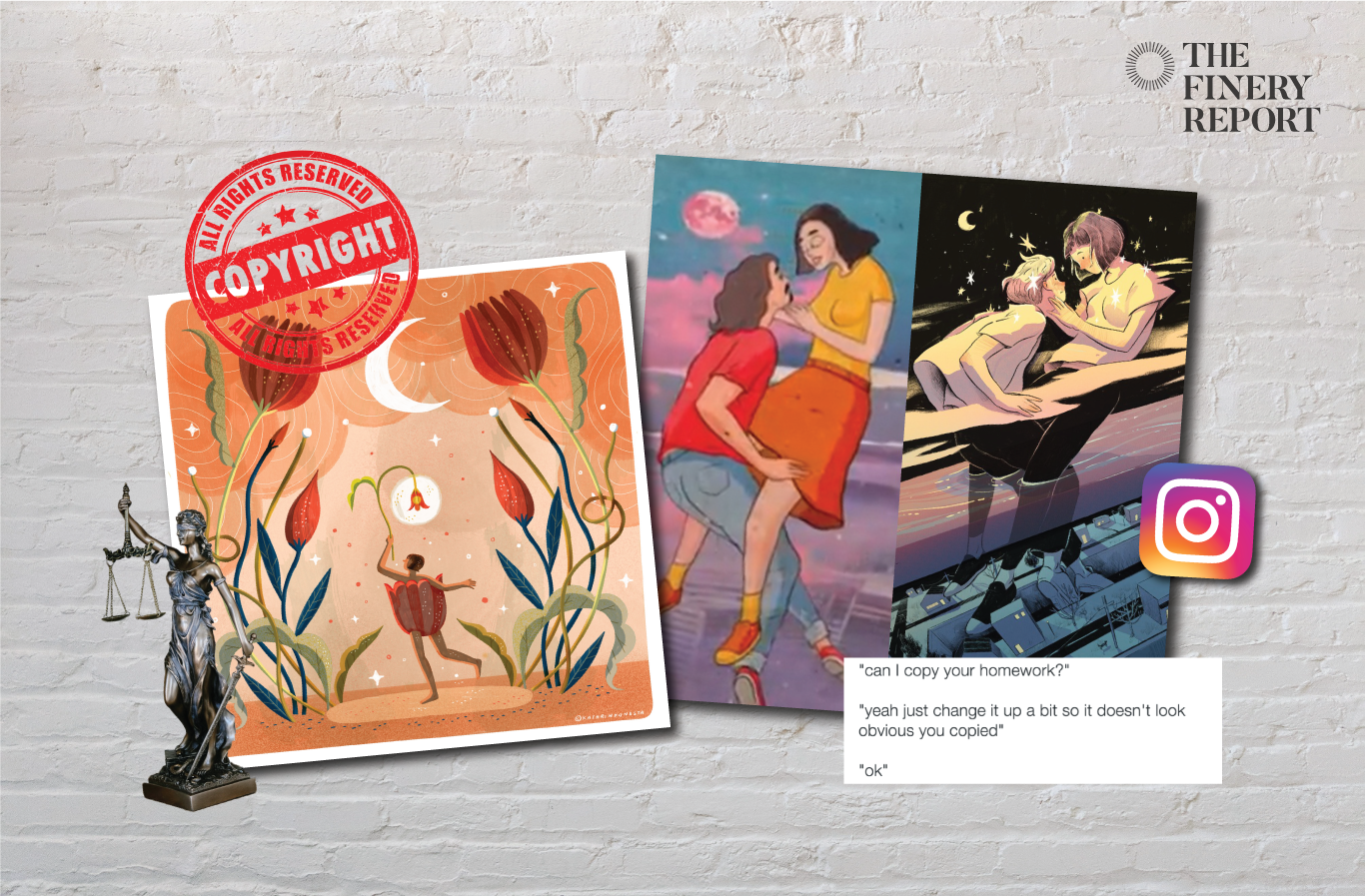Putting price on artwork - Part 1. Navigating copyright law
Read in Indonesian
Article 40 of Law Number 28 Year 2014 on Copyright stipulates categories of science, art and literature eligible for protection. In this article, we will discuss illustration which falls under the fine art category.
Indonesian illustrator Kathrin Honesta is no stranger to plagiarism. She once saw an art student in the UK submitted an embroidery work based on her illustration for a competition. Much to her dismay, the student won the competition. Back home in Indonesia, a publishing company in Yogyakarta used her illustration for a book cover without her permission. She contacted the company, and they decided to revise the entire cover to avoid further dispute.
Illustrator Dionisius M. B. Djayasaputra or Dion also went through plenty of plagiarism cases. “I don’t pursue every plagiarism case because there are too many,” Dion told The Finery Report. The ones that he pursues are those that could cause huge economic loss. For instance, an Indian animation studio copied his illustrations for a music video, which garnered more than 17 million views on YouTube. The artist has 20 million subscribers.
The case ended with a victory for Dion as the studio credited him, made a tribute post on their social media and compensated him. It taught him one thing: be more careful with licensing on platforms like Behance. “I actually stop posting on Behance and when I do, I make sure to not allow the CC license,” said Dion.
Plagiarism is an intentional act of copying or imitating work from authors, composers or other parties without permission to pass as one’s own. Frankly speaking, plagiarism is quite common in the country. Despite the existence of the Copyright Law, the phrase ‘there is nothing new under the sun’ becomes a justification as to why plagiarising is inevitable.
In addition, social media and websites make it more accessible for people to search and come across artwork. While those platforms boost an artist’s exposure, they also pave the way for plagiarism to run rampant.
Last year, Kathrin’s friends and social media followers informed her of a café in Malaysia that painted a mural based on her Project Monster illustration. After confronting the owner of the café through social media, they haven’t removed the mural. Their remarks, however, were uncalled for: “Won’t repeat again if you [did] not publish your valuable art in [the] future. Archive would be great for you. Just an opinion.”
Regardless of the risk, social media is the easiest way to publicise artwork since protection is automatically granted the moment a creator publishes his or her artwork to the public. Registering an artwork to the Intellectual Property Directorate General is simply an extra step to confirm that the creator fully owns the artwork.
However, unlike the Trademark Law, copyright protection has an expiration date.
In December 2020, the Central Jakarta District Court ruled in favour of the successors of the Welcoming Monument copyright holder against the Grand Indonesia management. Although the monument’s designer Henk Ngantung has passed away, the Copyright Law continues to protect his design for 50-70 years after his death. After that, the artwork will become part of the public domain.
The moment an artwork becomes part of the public domain, anyone is free to use the artwork for commercial purposes.
Pursuing the copycats
According to Article 95 of Law Number 28 Year 2014 on Copyright, a copyright dispute settlement can be done through alternative dispute resolution, arbitration, or court (commercial court).
To avoid legal battle, creators could opt for alternative solutions acknowledged by the law, namely mediation, negotiation and conciliation. Mediation requires a neutral third party to ensure impartiality. This can be executed in the court or through a private institution.
Copyright protection is also eligible across 160 countries that are members of The Berne Convention. It deals with the protection of works and the rights of their authors. For instance, if the original creator lives in Indonesia and the plagiarised art is created in Malaysia, the original creator will be able to file a complaint in Malaysia.













